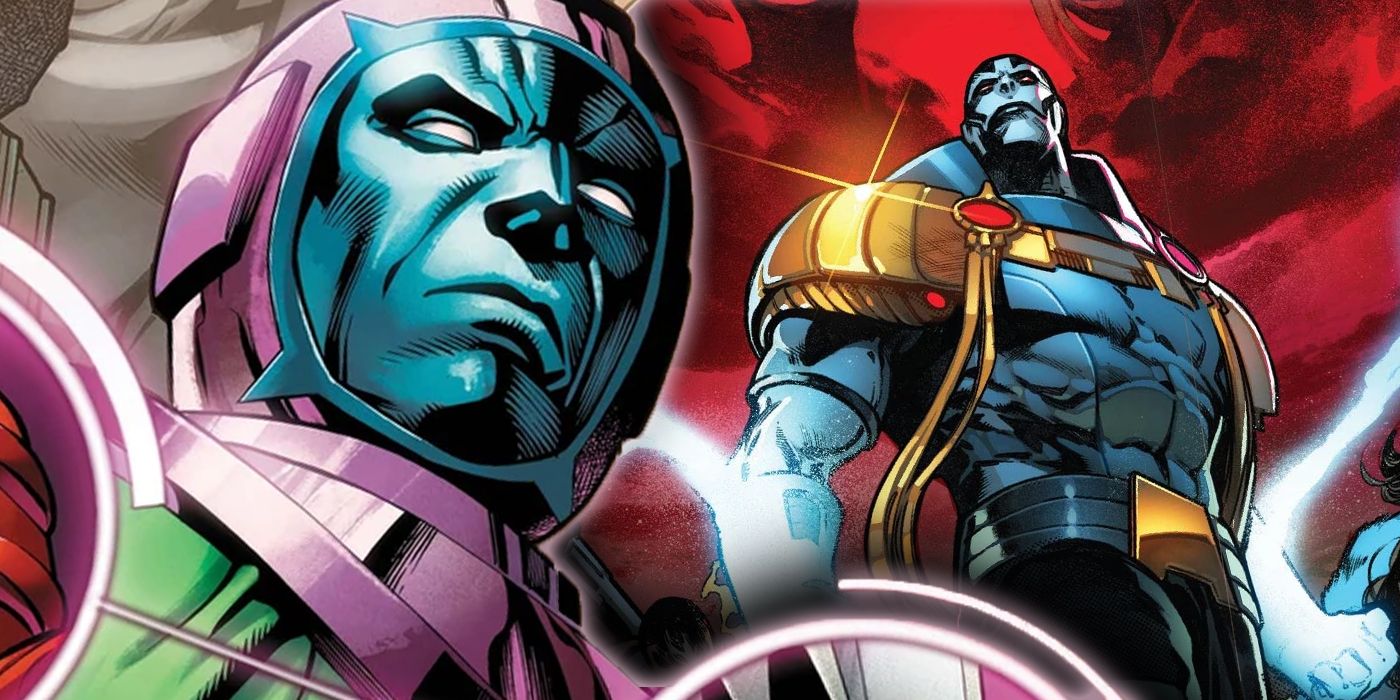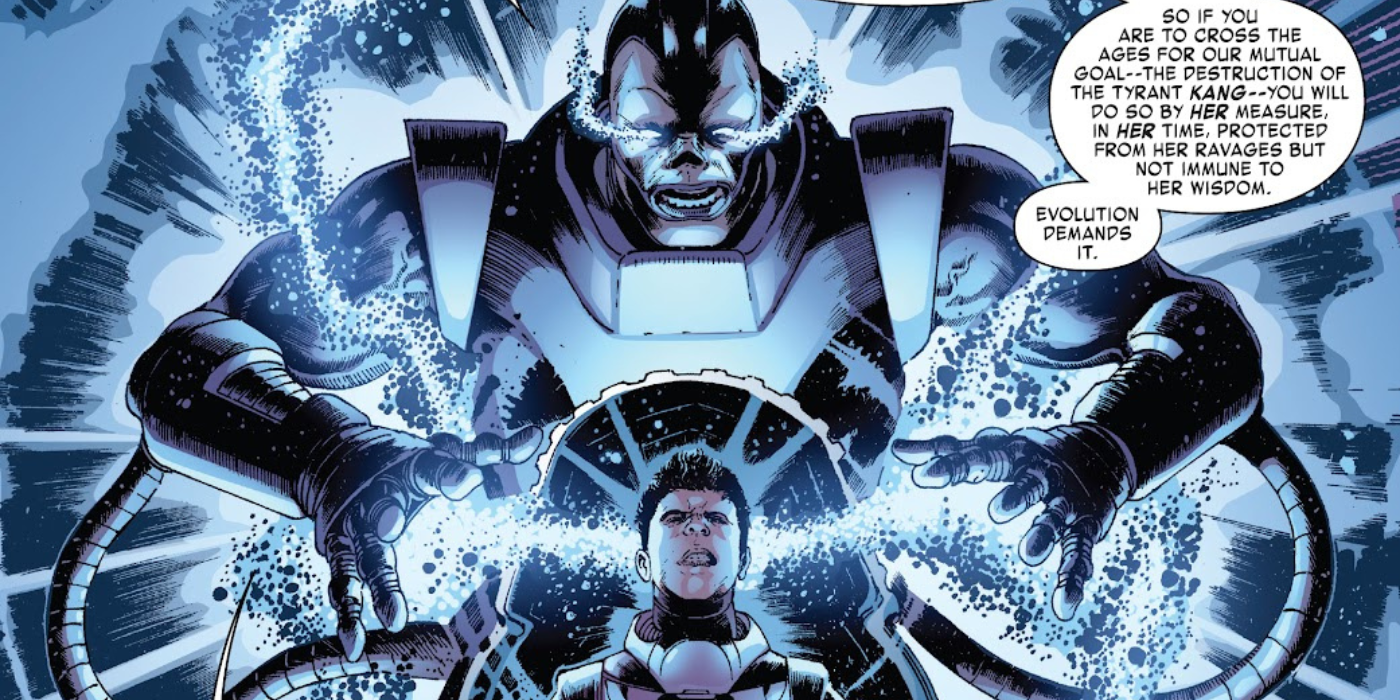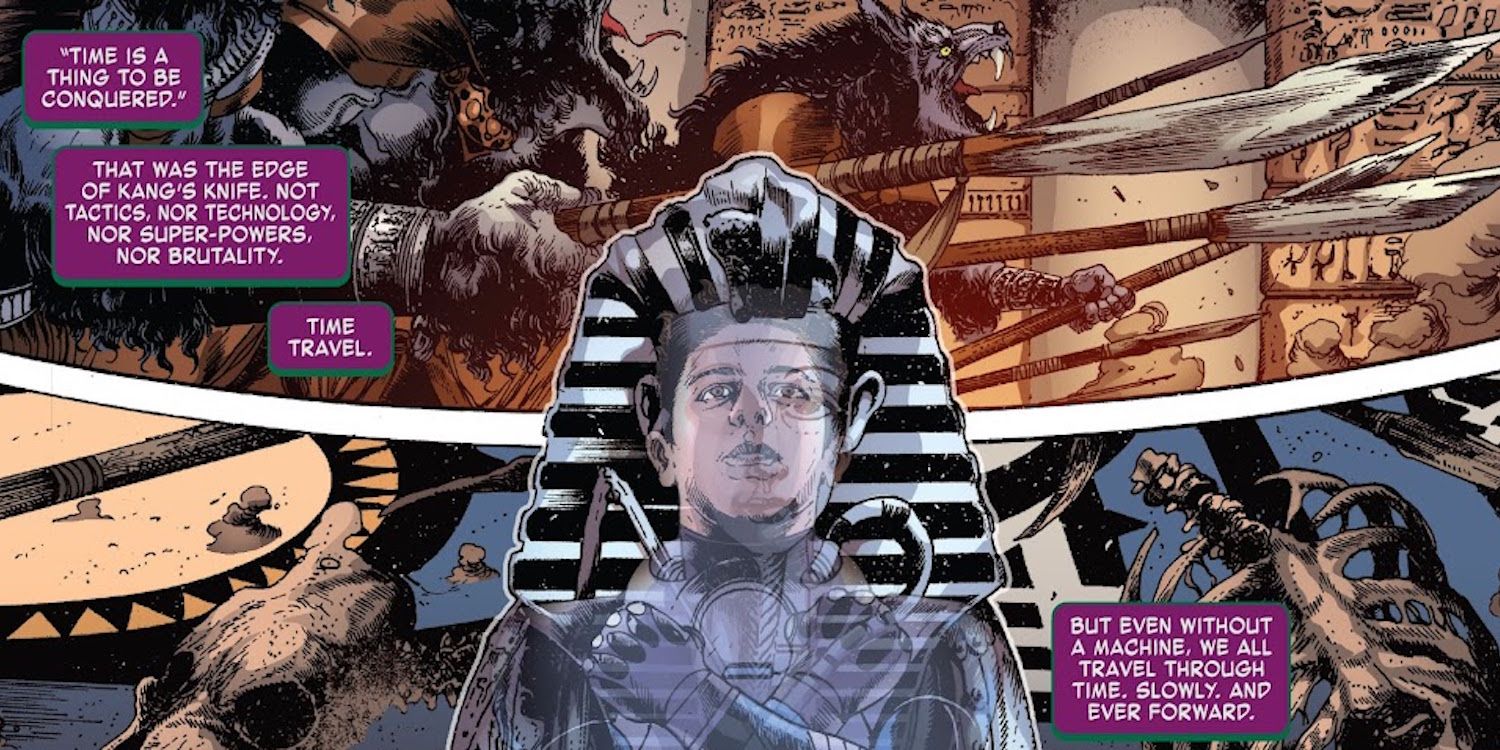Warning: The following article contains spoilers from Kang the Conqueror #3, on sale now from Marvel Comics.
Time travel is a beloved plot device and the subject of much speculation, usually put in a positive light. Most time travel in fiction requires the use of some sort of futuristic device, or sometimes an ordinary, contemporary invention, such as a vehicle, modified with the necessary advanced technology. Marvel villain Kang the Conquerer's mastery over time is his greatest and most dangerous asset, making him a serious threat, most often to Earth's Mightiest Heroes, the Avengers. However, this power did not originally come overnight, nor with the use of the latest and most powerful tech. In fact, it took over twenty-six thousand years–all in real time.
In Kang the Conquerer #3 (by Jackson Lanzing, Collin Kelly, Carlos Magno, Espen Grundetjern, and VC's Joe Caramagna), Kang's teenage self, Nathaniel Richards, joined forces with the Mutant En Sabah-Nur, aka the X-Men villain Apocalypse, to destroy his tyrannical future self. With Apocalypse's help and knowledge of the Egyptian gods, Kang underwent a particularly unusual method to travel through time.
Apocalypse invoked the powers of the ancient Egyptian goddess of time, allowing young Nathaniel to remain in a state of suspension as he was placed inside a sarcophagus, and buried alive. Time passed normally as he was buried for 26,964 years, with his patience and sanity being severely tested. Even Nathaniel was taken by surprise at this turn of events, but found it too late to turn back once the process had begun.
The idea of a malevolent being manipulating and mastering space and time is concerning in and of itself. But perhaps even more disturbing is Kang's initial method of time travel, trapped for millennia inside a cramped sarcophagus like a living mummy. Nathaniel remained conscious the entire time he was entombed, unable to eat, sleep, or even move. This sounds less like a glorious sci-fi epic and more like something from a horror film, a practice in torture tenfold for those with even the slightest hint of claustrophobia. And this doesn't even cover the intense boredom that comes with being unable to do practically anything for thousands of years.
Being trapped and buried alive is one of humanity's most primal fears. Even people without claustrophobia would be understandably afraid at the thought of being buried or trapped while still alive and conscious. Even if one managed not to go mad with fear, twenty-six thousand years is a long time to be inactive, isolated and bored. Kang's unorthodox time travel adventure would drive most people to the brink of madness. But Kang is not most people.
Trapped inside his prison, his body immune to the effects of time but his mind awake and alert, Kang made use of this enforced isolation. He sharpened his senses, focused his mind, and contemplated all his previous failures. He spent the next millennia in thought, meditation, preparation and patience. By the time he emerged, Kang not only left behind his boyhood, as he put it, but much of his humanity. He was truly a being driven by purpose and purpose alone, and as Kang, a viable and intimidating threat, far more dangerous than the teen he once was.
With Nathaniel Richards now having a prominent place in the MCU, and his role being expanded, this backstory involving time-travel via sarcophagus should be worth considering. It's possible that Kang's backstory could be explored further, and his ties to Apocalypse and arcane time travel could be portrayed in a similar manner. Perhaps a few tweaks and a few scene skips via a cleverly edited montage could make this rather unconventional voyage through time a compelling part of the MCU and its rising star.



